Dwarf cichlids from South America
In the large family of cichlids aka cichlids there is a small subgroup known in aquaristics as dwarf cichlids. This is the name given to all species that do not grow larger than 10 cm.
In South America there are especially many genera of dwarf cichlids, which have found their way into our aquariums as especially colorful and interesting ornamental fish, partly already a very long time ago - dwarf cichlids can look back on a proud tradition in aquaristics. Especially well known in the hobby are the butterfly cichlids Microgeophagus and the dwarf cichlids from the genera Nannacara, Dicrossus and natural the almost ubiquitous representatives of the genus Apistogramma. However, the genera Apistogrammoides, Biotoecus, Crenicara, Ivanacara and Laetacara also belong to this group. In total, the dwarf cichlids are plus/minus 150 species strong, and there are still some breeding forms and site variants. In the case of the breeding forms, the coloration and sometimes also the fin shape is very different from the wild form.
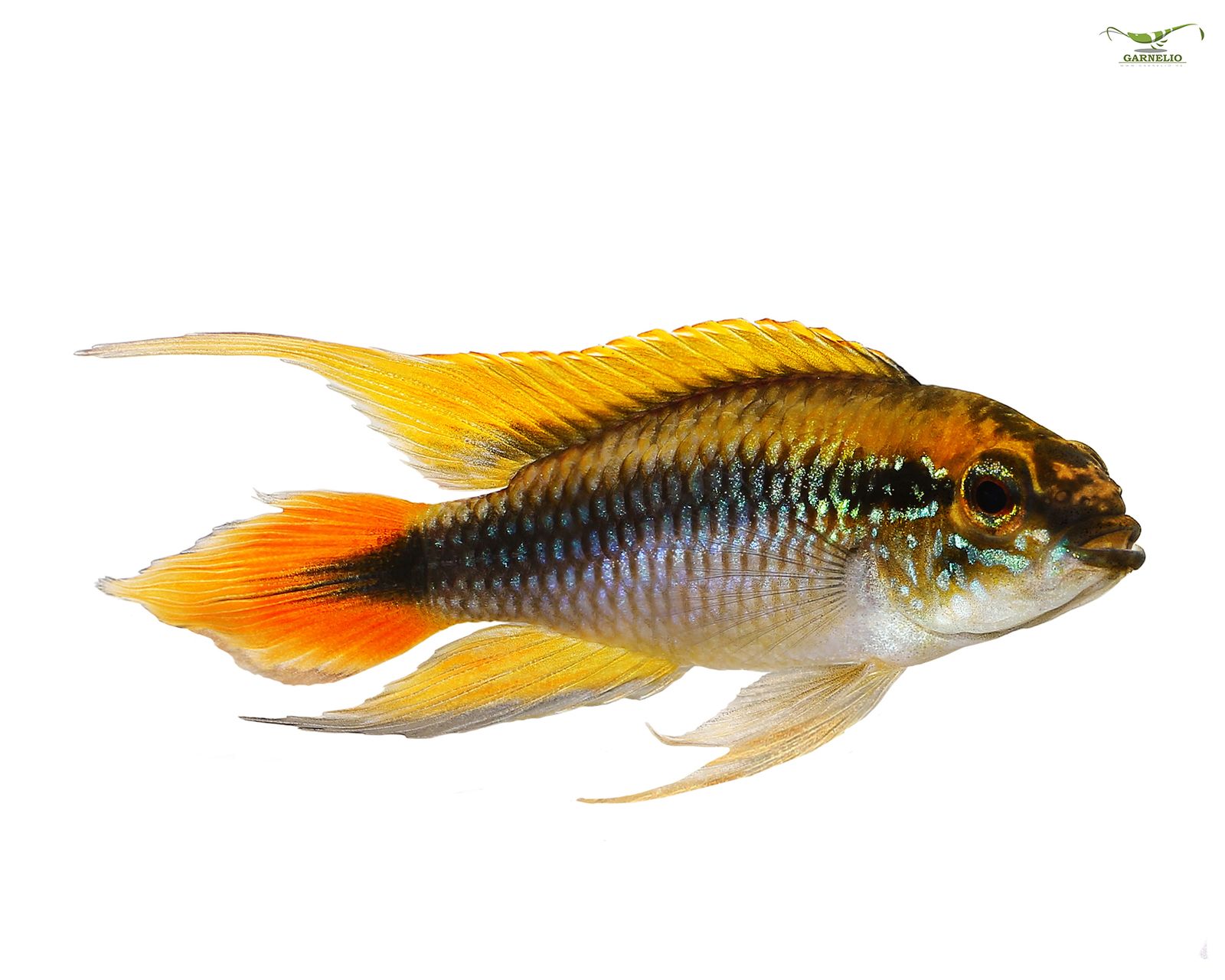
Trivial names and scientific names
Unfortunately, very many dwarf cichlids do not have uniform German names, so the scientific names such as Apistogramma agassizi or Microgeophagus ramirezi are so important here. Only with these clearly defined names you can really inform yourself about the keeping of these beautiful cichlids, as unusual as this may seem to the average aquarist.

Life expectancy
Unfortunately the swimming gems are quite short-lived ... it is assumed that dwarf cichlids only live about one year in nature. In the aquarium their life expectancy is 2-3 years under good keeping conditions. For this reason alone it is worthwhile to breed these fascinating fish - by the way, it is not that difficult.
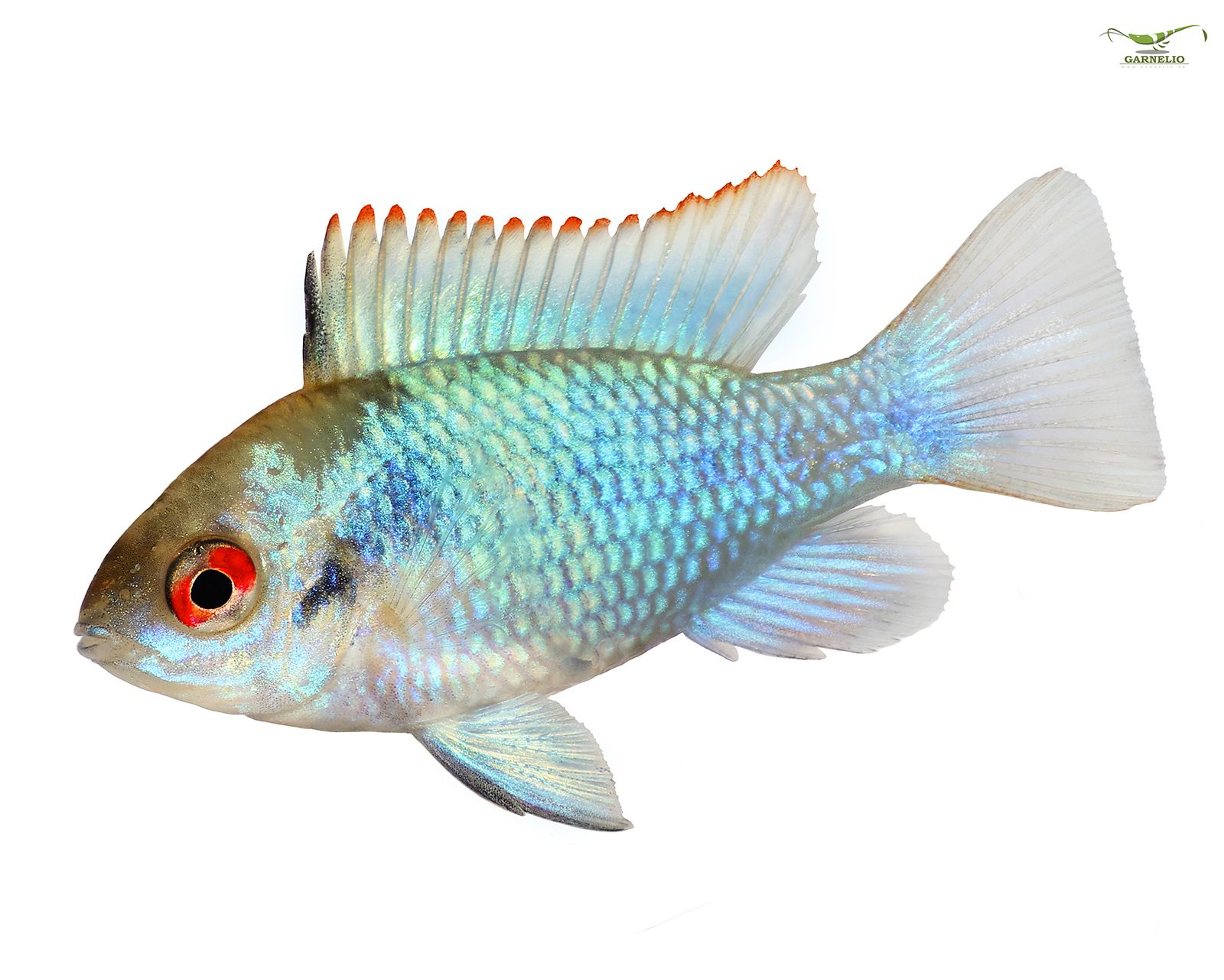
Occurrence in nature
The group of South American dwarf cichlids is a rather inconsistent one and is defined only by the size of the fish. Some species live in rather hard water in their natural biotopes, while others live in soft black water rich in humic substances. We therefore go into detail about the individual requirements in our store descriptions. Most dwarf cichlids live in their South American homeland rather in shallow water along the banks in slow flowing or even in stagnant water, very often in rivers or lakes with a fine, sandy bottom. As a rule, the biotopes also contain a lot of accumulations of foliage. Some biotopes are densely covered with plants, but often the dwarf cichlids are in the overhanging bank vegetation in nature. A lot of driftwood and fallen trees can also be found in some of the biotopes. Here the dwarf cichlids like to hide and in the protection of these wood accumulations they also often breed.
The temperature requirements can vary depending on the origin as well as the water hardness requirements. Here, too, it is therefore important to know exactly the type of cichlid being kept and to adjust the water values and water temperature in the aquarium accordingly.
South American dwarf cichlids come from very clean biotopes and react sensitively if there is a lot of nitrate in the water. They also do not tolerate a high germ load. Therefore, in addition to a powerful filter, regular water changes should not be neglected. Humic substances are an important water additive for these beautiful fish and are almost essential for their survival. Since humic substances are almost never present in tap water, they should be added via a preparation such as NatureHolic Liquid Humin. Sea almond leaves or alder cones also do a good job here.
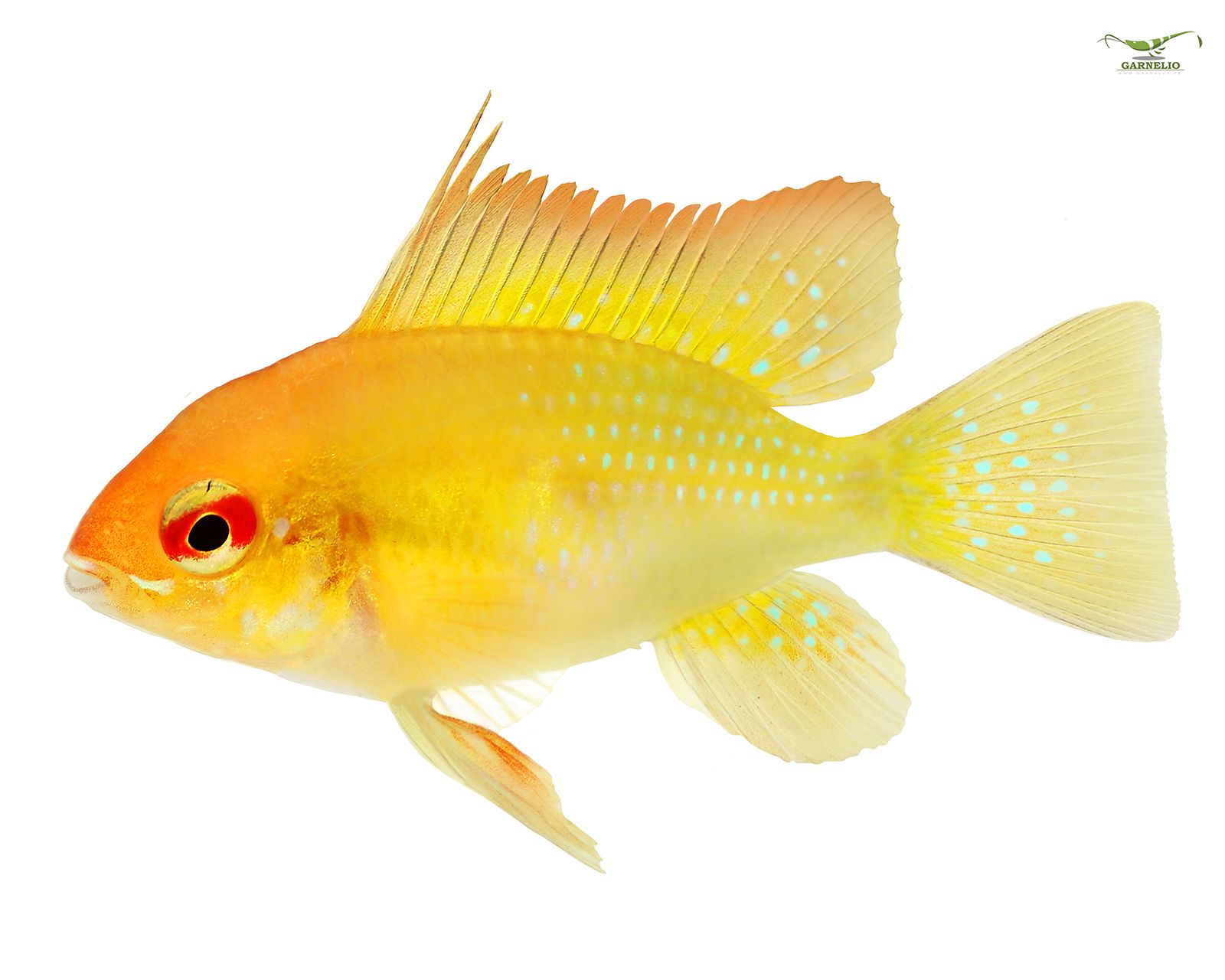
Foraging and the right food
Basically South American dwarf cichlids are so-called sand chewers. This means that these pretty colorful cichlids naturally pick up chunks of food, but they also pick up fine sand in portions, chew it through with their mouths and then spit it out again. This type of foraging is extremely important for South American dwarf cichlids, and if they cannot chew through sand, they are susceptible to fungal infections and other diseases in the mouth area and gills. For this reason, a sand area should always be available to them in the aquarium so that they can behave in a species-appropriate manner here. If you do not want to equip your aquarium completely with sand, you can also provide the animals with a - sufficiently large - sand corner, or fill a bowl with fine sand and place it in the aquarium. There are no limits to the imagination. Apistogramma, Microgeophagus and Co. are especially happy when they find small worms and similar animals in the sand - live food in the form of Tubifex or shiny worms is a real highlight for them and gives them a sense of achievement when searching for food.
South American dwarf cichlids are basically carnivores. In nature they feed on insect larvae, worms, small crustaceans and the like. In the aquarium, in addition to live and frozen foods, they can be attracted to a carnivorous cichlid diet formulated according to their diet. We have taken a close look at the NatureHolic Cichfeed and composed it exactly to the needs of South American dwarf cichlids and other carnivorous cichlids.
Especially if you want to breed the dwarf cichlids, the right food is crucial for breeding success. Here you should give several weeks only the highest quality live food or frozen food, so that the animals have a good condition.

Keeping in the aquarium - group size
Many species of South American dwarf cichlids are not strong swimmers. They can already be maintained in relatively small aquariums, because they are very site-loyal and claim also in nature only small territories for themselves. The cave breeding dwarf cichlids from the genus Apistogramma and some other genera like Apistogrammoides, Dicrossus and Crenicara usually live in a harem in nature, i.e. one male takes care of a group of several females. Keeping them in pairs in the aquarium is also possible, of course, although harem keeping with an excess of females in sufficiently large aquariums has also proven successful for many. The dwarf cichlids from the genus Apistogramma, which are kept particularly frequently in aquaristics, have a very clear division of tasks, just like the other genera mentioned above: The females take care of the brood care and later of the hatched offspring, the males keep enemies and competitors away from the territory. In the aquarium, each female therefore needs her own spawning site.
Other species, such as those from the genus Microgeophagus (the well-known butterfly cichlids), also live in pairs in nature and also take care of the brood care and rearing of the young fish together.
If the aquarium is not huge and very well structured, you should limit yourself to keeping one male - otherwise severe friction, severe stress and even injuries can occur with the pair-forming dwarf cichlids.
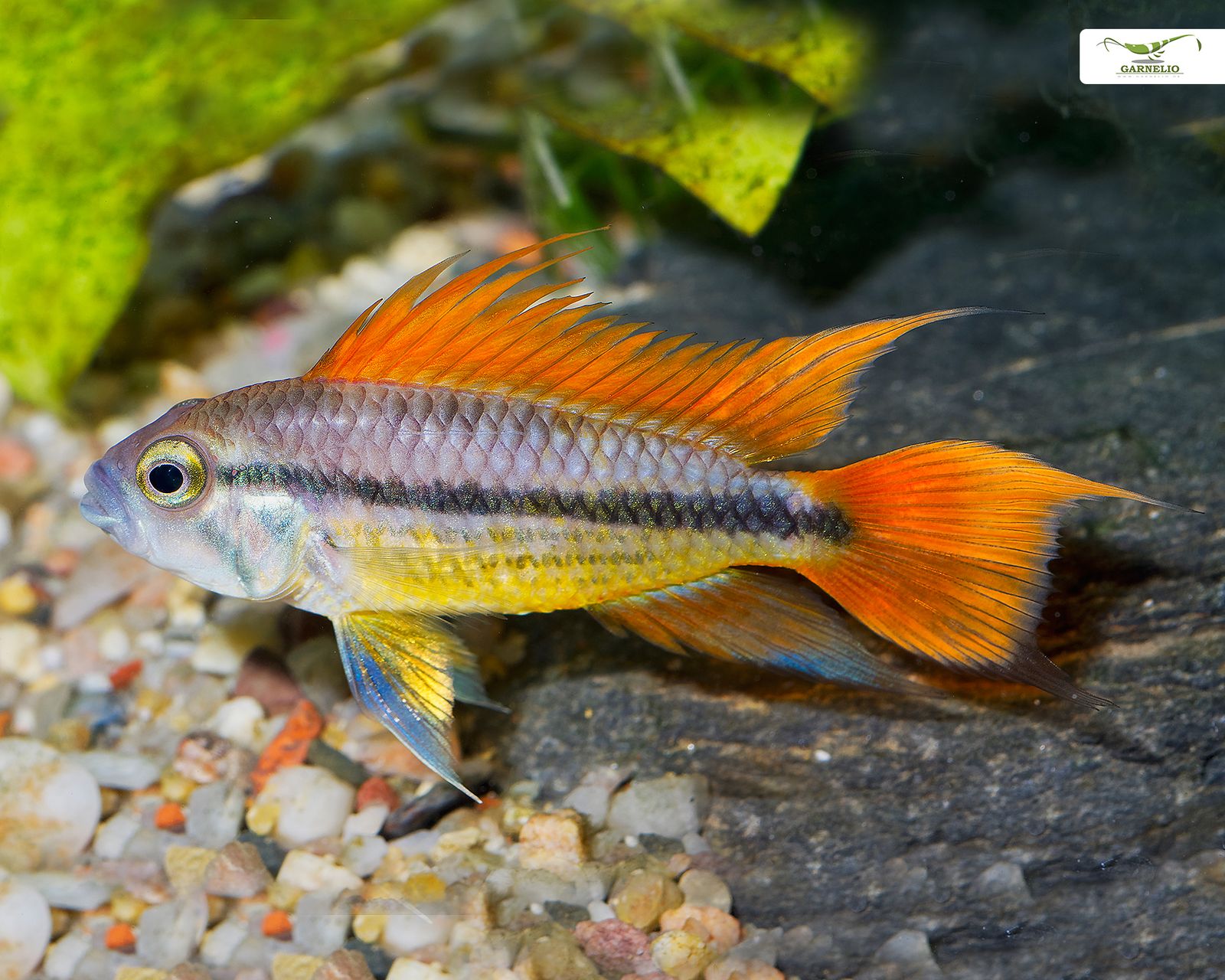
Keeping in the aquarium - the aquarium setup
Many dwarf cichlids are cave breeders, for example - as already written above - the popular dwarf cichlids from the genus Apistogramma belong to this group. In the aquarium, therefore, a spawning cave should be available for each female in an appropriately large territory. It has been proven to place the burrows in the center of the territory and not at the edge, so friction is avoided. Some species resort to self-help if they do not find any burrows and dig their own burrows in the soft substrate.
Microgeophagus and other genera like Nannacara, Ivanacara and Laetacara on the other hand are open breeders, which either build a shallow pit in the sand for their clutches or simply look for flat stones, root parts or also large plant leaves for it. An aquarium with these species should of course have suitable spawning sites.
Plants are not endangered in the dwarf cichlid aquarium. The fish like to have some swimming space in the center of the tank, but the edges are allowed to have dense growth. Dense tangles of roots and brown fall foliage on the bottom are also nice design elements that allow the animals to live in a biotope.
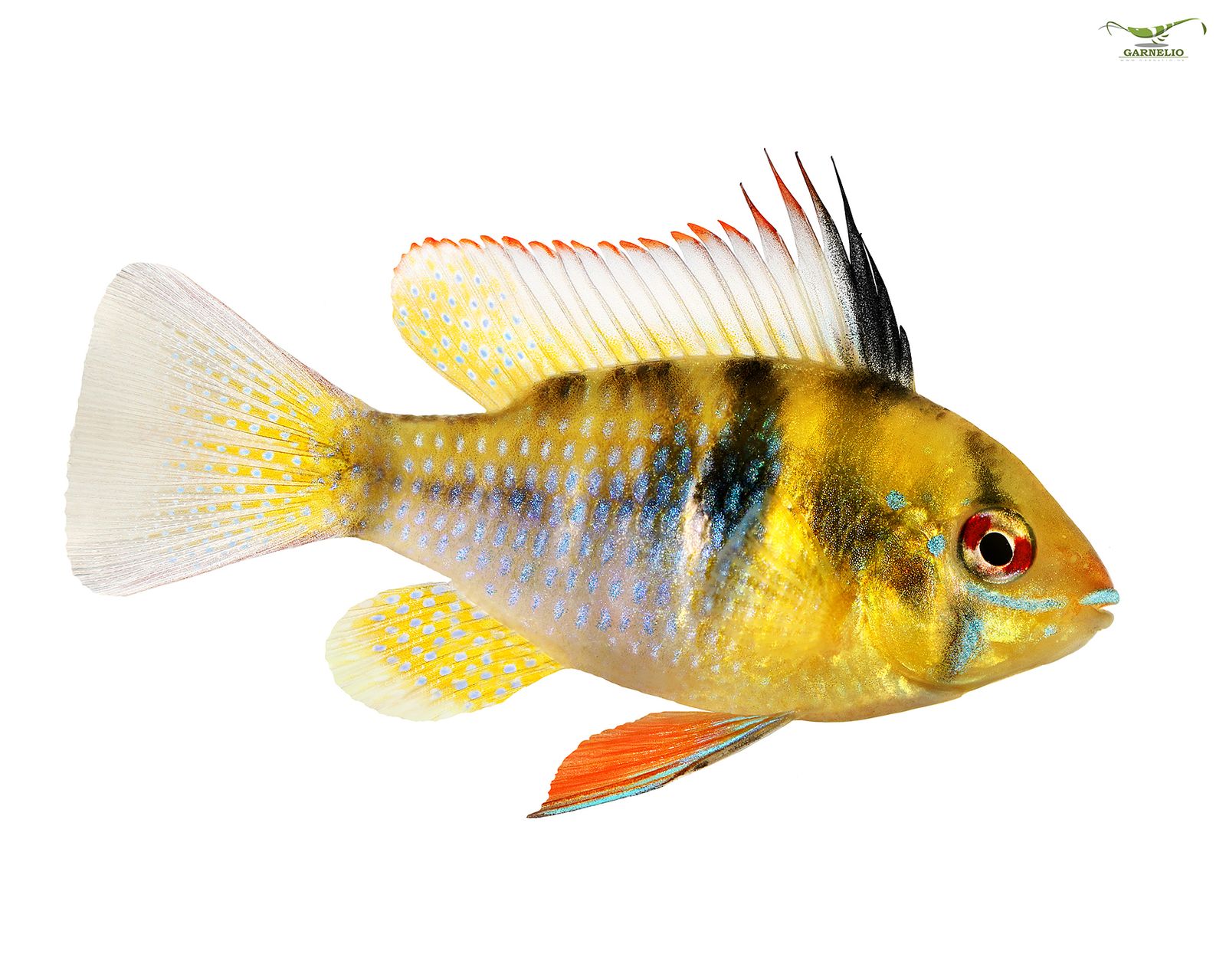
Keeping in the aquarium - socialization
While the males like to start fights with male conspecifics especially during the breeding season, South American Dwarf Cichlids usually get along very well with other fish species. South American dwarf cichlids tend to live in the middle to lower water layers in the aquarium, so surface-oriented fish such as tetras with similar water quality requirements are perfect company. You can also socialize the South Americans very well with catfishes that rasp growth. Even if the (peaceful) by-fish are larger than the dwarf cichlids, they have no problems with each other.
Shrimps and dwarf crayfish, on the other hand, belong to the food spectrum of the rather predatory dwarf cichlids, and the offspring will definitely be eaten. It has also often happened that larger animals were eaten especially after a moult. So you should definitely avoid a socialization with these animals. Larger crayfish, on the other hand, see the dwarf cichlids as competition for the burrows, and since these ornamental fish stay in the same aquarium area as the crayfish, there is a high risk that they will be preyed upon and eaten by the clawed crayfish.
Breeding
You can even partially breed dwarf cichlids in a community aquarium if the stocking is suitable. However, it is often the case that these beautiful ornamental fish can be kept in harder water, but cannot be bred. If you have harder water in the community aquarium, the breeding success can fail. Then it is definitely worthwhile to set up a separate breeding aquarium. Here you work with soft, slightly acidic water and appropriate temperatures. The females (and in some species also females and males together) perform extensive brood care.
After hatching, the young fish still feed on their yolk sac. Initially they do not swim freely. Depending on the species, the females also lead the hatched fry through the territory for several days after they have swum free. The fry are still quite small at the beginning and are fed with freshly hatched artemia euplii and infusoria. They grow quickly and a short time later you can also feed them somewhat larger live food and frozen food.
Overview of particularly popular species
In the following we present some of the most popular dwarf cichlids in aquaristics.
Apistogramma cacatuoides - cockatoo dwarf cichlid (to the store)
Of these beautiful cichlids, there are different colorings, for example Apistogramma cacatuoides "orange" or Apistogramma cacatuoides "red". They can be kept well in harder water. It comes from waters with clear water. Keep in pairs or harems.
Water values: GH 8 to 12, KH 3 to 8, pH 6 to 8, temperature 24 to 29 °C
Water values breeding: GH 8 to 12, KH 3 to 8, pH 6 to 8, temperature 24 to 29 °C
Apistogramma agassizii - Agassiz' dwarf cichlid (to the store)
Agassiz' Dwarf Cichlid is also kept in different color varieties, for example Fire Red. Apistogramma agassizi comes from biotopes with black water and likes also in the aquarium rather soft water and a good content of humic substances. Keep in pairs or harems.
Water values: GH 8 to 12, KH 3 to 8, pH 6 to 8, temperature 24 to 29 °C
Water values breeding: GH 0 to 5, KH 0 to 3, pH 5 to 7.5, temperature 27 to 29 °C
Apistogramma panduro - Panduro's dwarf cichlid (to the store)
The females and males of Apistogramma panduro are very differently colored and almost look like two different species of fish. Panduros dwarf cichlids come from black water biotopes and need rather soft and humic water also in the aquarium. Keep in pairs or harems.
Water values: GH 7 to 14, KH 3 to 8, pH 5.5 to 7, temperature 22 to 28 °C
Water values breeding: GH 0 to 5, KH 0 to 3, pH 5 to 7.5, temperature 27 to 29 °C
Microgeophagus ramirezi - Butterfly Cichlid (to the store)
From the butterfly cichlid Microgeophagus ramirezi are beside the beautiful and very colorful wild form also different breeding forms in the aquaristics on the way, so for example the "Electric Blue" or the "Lemon Gold". These beautiful dwarf cichlids come from very soft black water habitats, but can also tolerate medium hard water in the aquarium. Pair keeping.
Water values: GH 2 to 20, KH 0 to 12, pH 6.5 to 7, temperature 22 to 30 °C
Water values breeding: GH 0 to 3, KH 0 to 1, pH 5 to 6, temperature 28 to 30 °C
